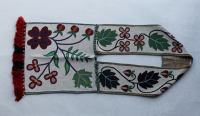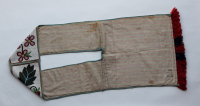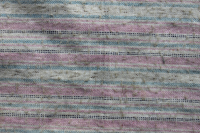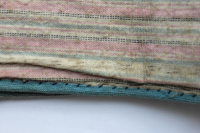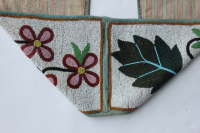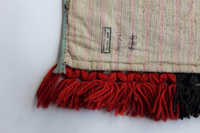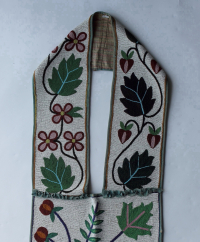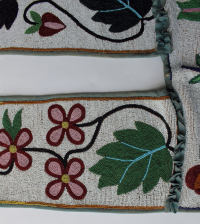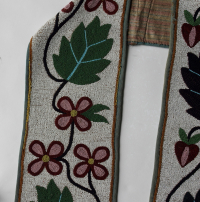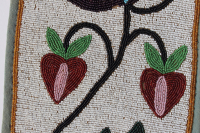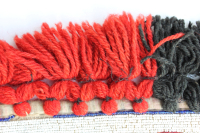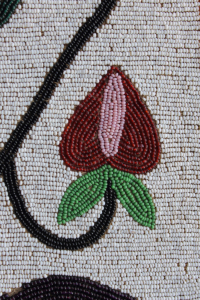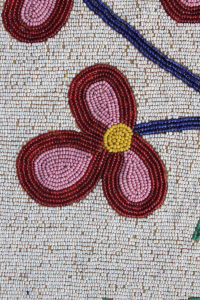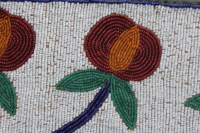Bandolier bag
Bandolier bag
Bandolier bag
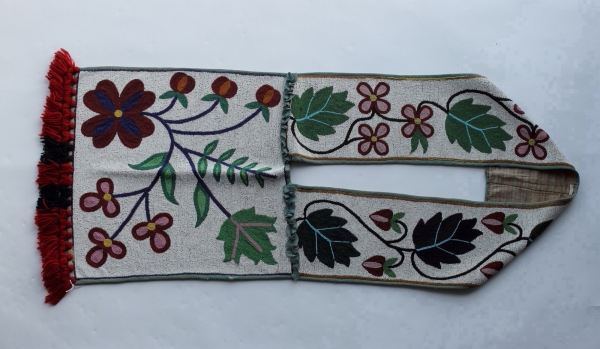
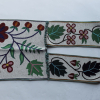
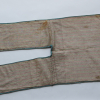


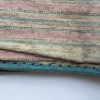
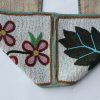
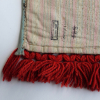
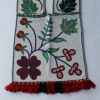
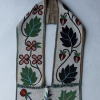
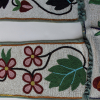
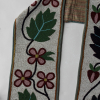
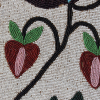
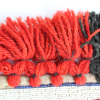

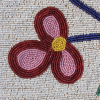
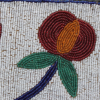
Pouch panel with two-piece shoulder strap, overlaid spot stitch applique, multicolour floral beading
Summary of catalogue records
Read More About This Relative
Cotton muslin, flannelette , seed beads, twill tape, wool, thread.
False pouch, Bandolier has two-piece shoulder strap and a pouch panel of cotton muslin with blue striped flannelette backing, All edges except bottom edge of pouch panel bordered by blue twill tape, Blue twill tape ruffle on top edge of pouch panel, Twenty wool tassels
Front of pouch panel and strap decorated with beaded floral designs in an opaque white background, Triple stems, navy on panel, black on strap, multi-coloured opaque and semi-translucent seed beads with an overlay spot stitch appliqué, Pouch panel circumference has blue row inner border; strap has a yellow double row inner border, sixteen red tassels with four black tassels at centre area, black and white thread
Bandolier bags most likely originated in the Upper Great Lakes region during the 1840s and 1850s. Fashioned exclusively from European materials and adorned with thousands of beads, bandolier bags were primarily for show, as a symbol of identity, wealth and status. Although initially functional, by the late 19th and early 20th centuries many of the bags had false pouches or none at all. Sometimes called "friendship bags", they were often created as gifts to strengthen relationships within communities or between nations. By the 1870s they had become an important element of formal dress worn mainly at ceremonies and celebrations by men, and occasionally by women. They wore them - singly or several at a time - crossed over the torso or draped around the neck. The wearing of more than one bag was generally the prerogative of a leader or a person of high honour." (McCord, 2013)
From catalogue records
Provenance
Hudson's Bay Company Winnipeg Fur Trade Department collected materials in preparation for 250th anniversary celebrations of the HBC in 1920. Many of these items were used in the Processions and Pow Wow at Lower Fort Garry in May, 1920.
The McCord Museum, 2013; Print.
Hudson's Bay Company Historical Exhibit.
Opened June 19, 1922, in Winnipeg in the Portage Avenue "HBC" store.
In Winnipeg in the Portage Avenue "HBC" store.
About This GRASAC Record
Manitoba Museum













Northeast Great Lakes Riverine
 Knowledge Sharing Platform
Knowledge Sharing Platform

